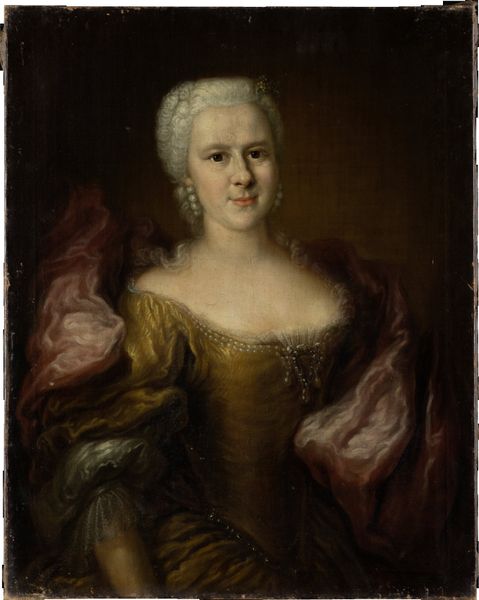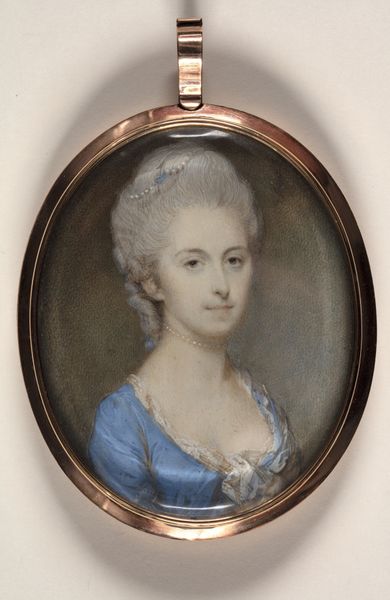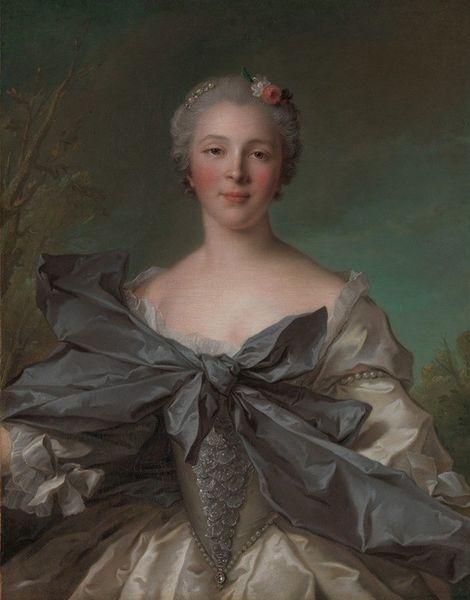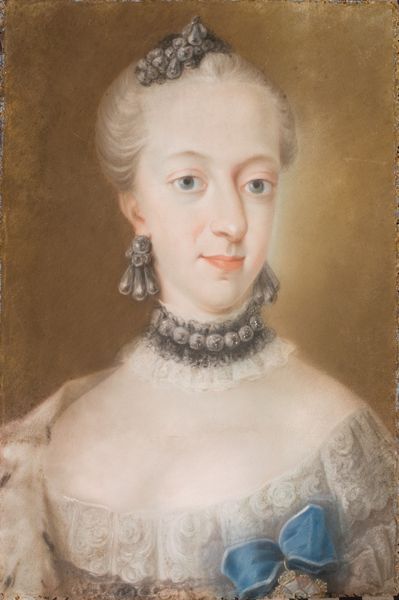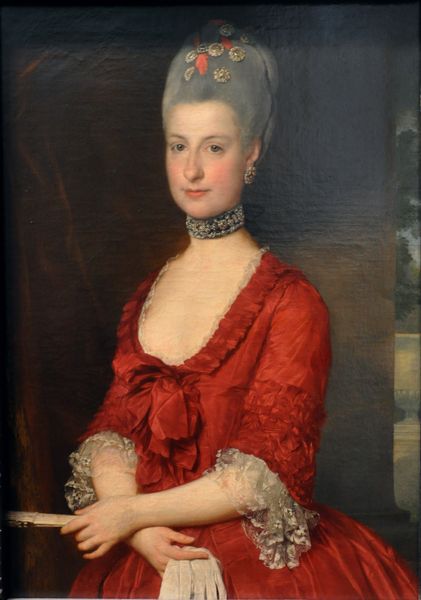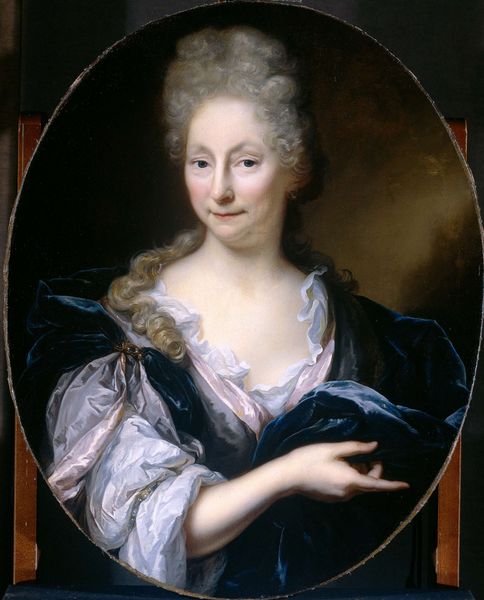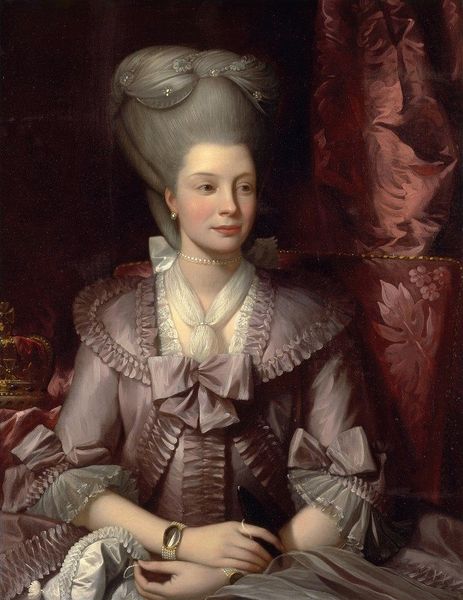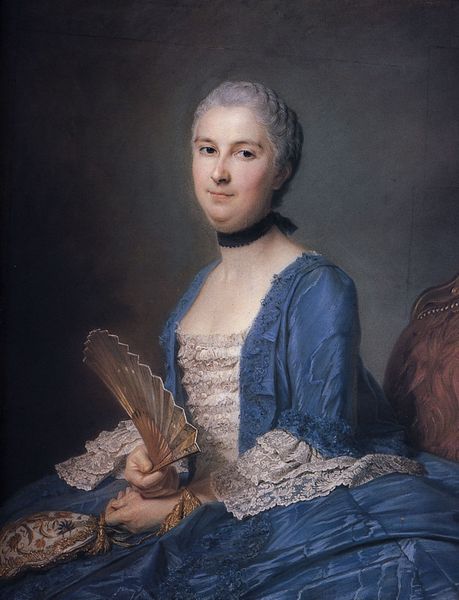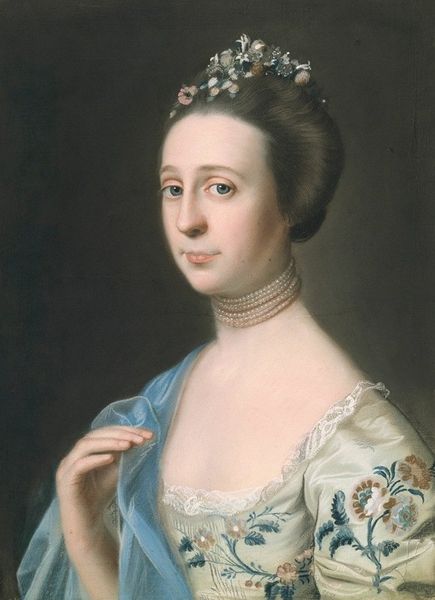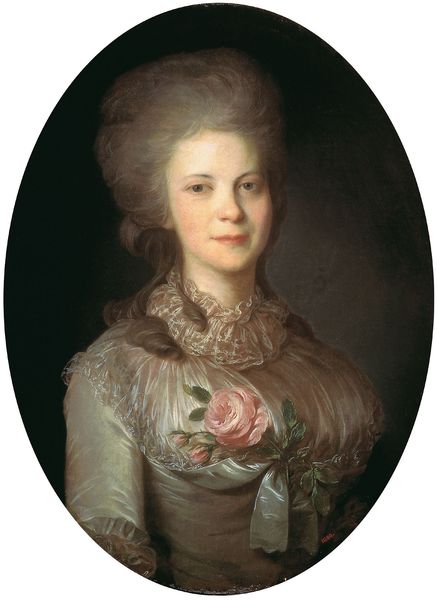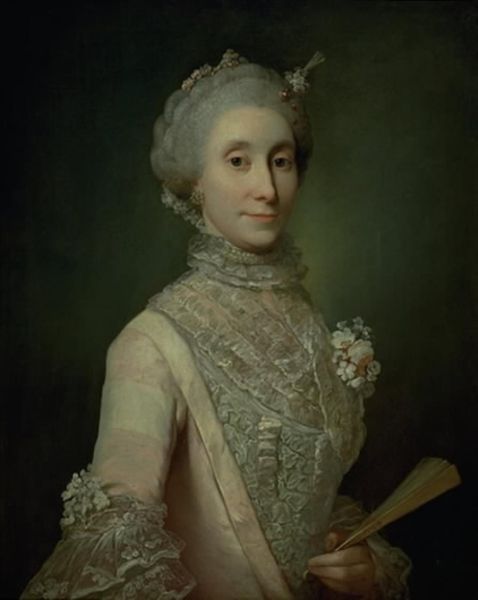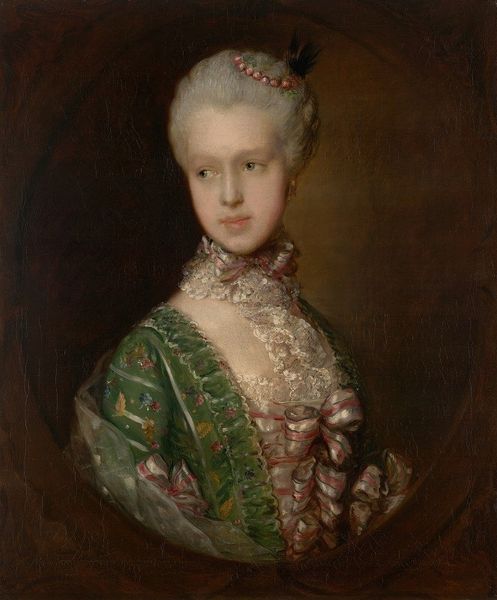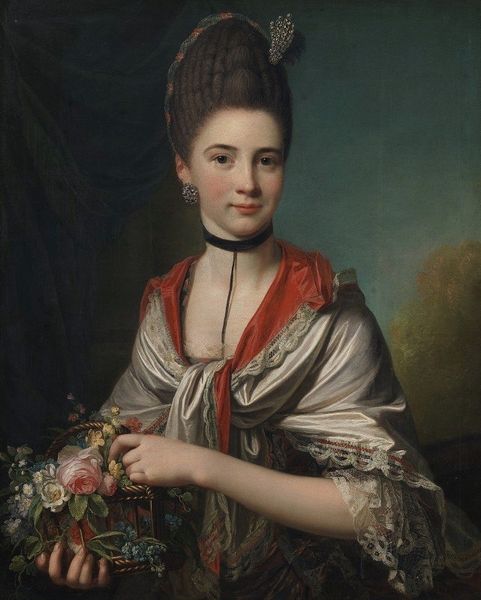
painting, oil-paint, canvas
#
portrait
#
character pose
#
character portrait
#
painting
#
oil-paint
#
canvas
#
genre-painting
#
academic-art
#
rococo
Dimensions: 78 cm (height) x 62 cm (width) (Netto)
Curator: Standing before us is a portrait of Cathrine Sophie Kirchhoff, née Christensen, rendered in oil on canvas in 1768 by the Danish artist Jens Juel. It resides here at the SMK, the Statens Museum for Kunst. Editor: It strikes me as very composed. The soft, almost ethereal light lends a dreamy quality. I can sense the artist really focusing on surface texture; the intricate lace and the subtle flush of her cheeks, for example. Curator: Absolutely. Juel was deeply influenced by the French Rococo style, and it’s very apparent here. Rococo was the go-to aesthetic style for European elites during that era, a standard of elegance. You see it expressed clearly through his composition. Portraits became the key way to reflect elite status during this era. Editor: The floral motifs throughout - the wreath in her hair, the posy at her chest - are telling too. Flowers were key emblems of transient beauty and the idealization of women at the time. Even the curve of that decorative oval behind her alludes to classical ideals of feminine beauty. Curator: It's important to note, that while outwardly portraying these beautiful Rococo ideals, that these portraits can also portray social standings. Cathrine Sophie was a middle-class woman at the time the painting was made, showing how this trend towards portraiture moved into a wider population than those of higher society. Editor: The fan, the way she holds it, almost nervously… could that be interpreted as a signifier? Was a woman’s portrait only meant to capture likeness, or hint at inner characteristics as well? I detect perhaps a delicate social anxiety or the quiet pressures of being a woman. Curator: I think there is an undeniable truth in that. Portraiture isn't simply about depicting likeness; it's about constructing an identity that's acceptable for public consumption during that era. Editor: It certainly speaks volumes, then, of the performative nature of class and status during this time. So much more than meets the eye initially. Curator: Precisely! There’s a wealth of historical material here for us to consider, and also makes us ponder those subtle details, those underlying visual dialogues that speak volumes about the society from which they originate.
Comments
No comments
Be the first to comment and join the conversation on the ultimate creative platform.
